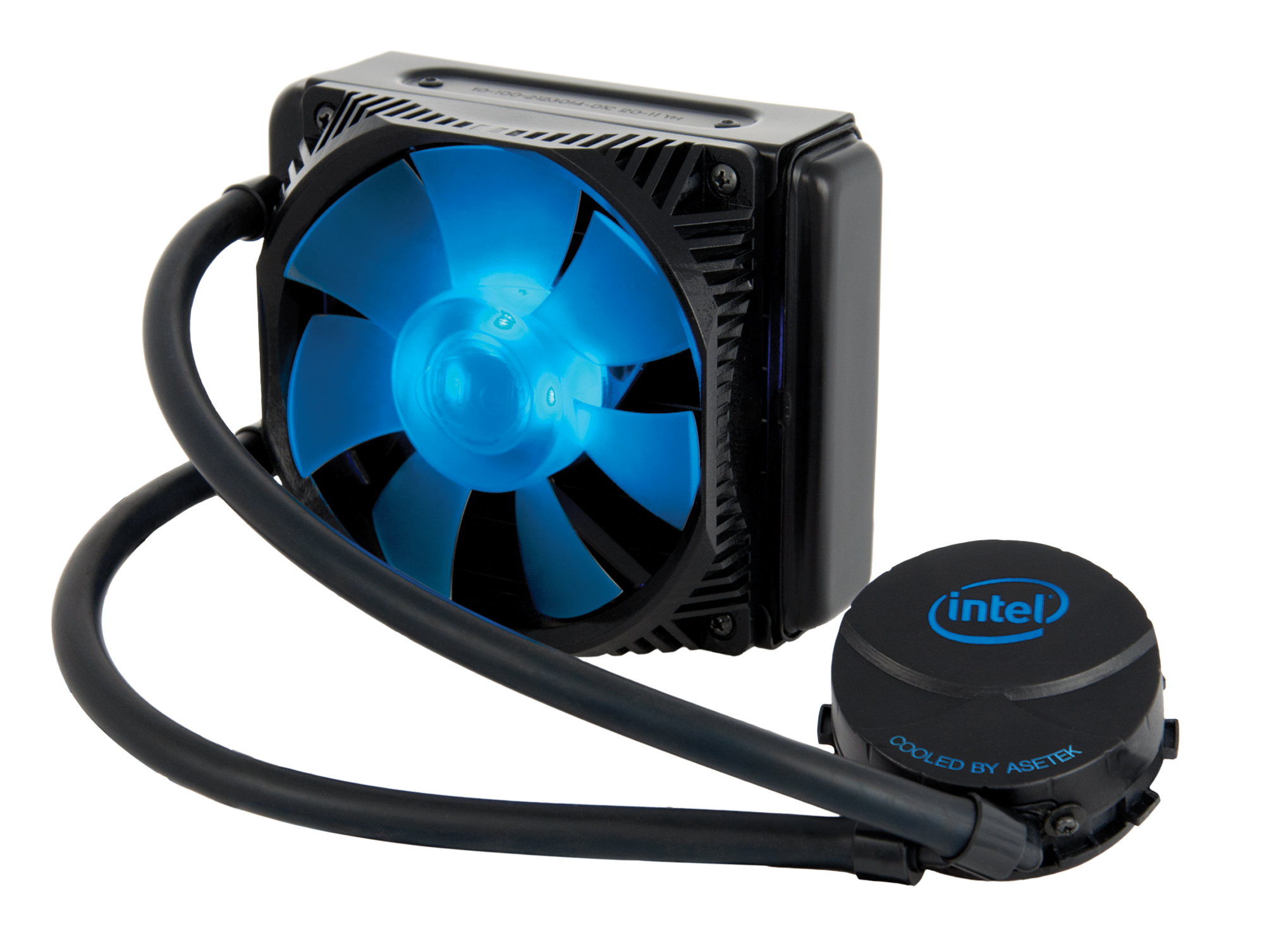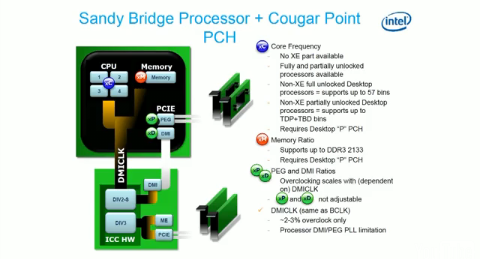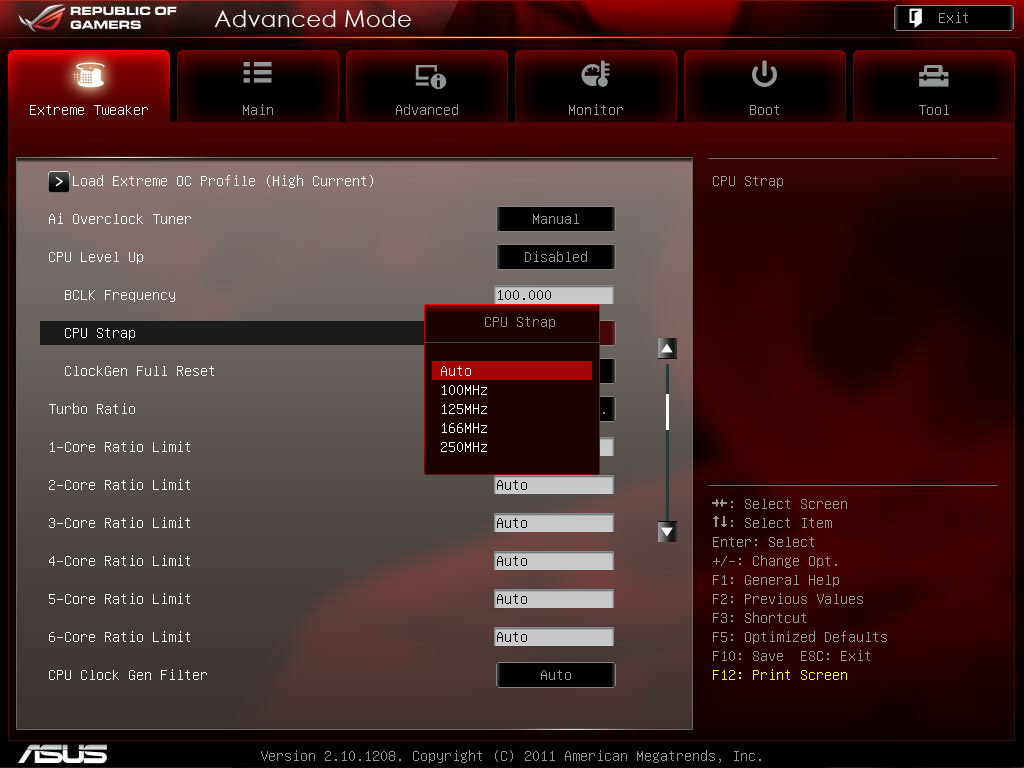Intel Core i7-3960X Review: Sandy Bridge-E And X79 Express
Intel's Sandy Bridge design impressed us nearly a year ago, but it was intended for mainstream customers. The company took its time readying the enthusiast version, Sandy Bridge-E. Now, the LGA 2011-based platform and its accompanying CPUs are ready.
Cooling And Overclocking Core i7-3960X
Intel isn’t bundling its Sandy Bridge-E-based Core i7s with a cooling solution of any sort. Perhaps the company surmised that few power users willing to drop 10 bills on a flagship processor stick with boxed heat sinks. Instead, it’s selling a closed-loop water cooler and cost-optimized heat sink/fan combination separately, allowing enthusiasts to pick between two options from Intel or a host of other third-party products.
Intel expects the liquid propylene glycol-based cooler, sourced from Asetek, to sell for somewhere between $85 and $100. That part is compatible with Sandy Bridge-, Ivy Bridge-, Sandy Bridge-E-, and future Ivy Bridge-E-based processors. Several other third-party liquid coolers are expected to accommodate motherboards with the LGA 2011 interface, too.
Intel’s heat sink and fan combo should go for less than $20, though that part is aimed at government and business customers who might look to Sandy Bridge-E for an entry-level workstation. That’s not to say there won’t be plenty of high-end air coolers for LGA 2011, though. Noctua sent us its NH-D14 SE2011 for our upcoming holiday gift guide, and we were able to get all six cores stable at 4.6 GHz running Prime95 for an hour with it on the Intel DX79SI board.
Now, I don’t put much stock in overclocking results from processors sent out to reviewers. But I spent some time polling system builders who were preparing to sell overclocked Sandy Bridge-E machines at launch, and it seems like 4.5 or 4.6 GHz is a realistic target for enthusiast-oriented PCs that (hopefully) won’t fizzle out and die within a month.
Overclocking Sandy Bridge-E
There are only three Sandy Bridge-E-based processors at launch, and only two of them are expected to be available. That pair of chips is multiplier-unlocked, making overclocking a fairly simple matter of setting a ratio and fine-tuning with BCLK settings.
The third model, Core i7-3820, isn’t unlocked, though. Instead, it’s “partially unlocked.” Intel lets you set a multiplier six bins higher than the highest Turbo Boost clock rate: 3.9 GHz. The result is a maximum of 4.5 GHz using ratios exclusively.
Get Tom's Hardware's best news and in-depth reviews, straight to your inbox.
Unlike the Sandy Bridge/Cougar Point combination, however, the clock generator for this platform is external, which makes it easier for you to make BCLK modifications without running afoul of buses more sensitive to deviation. In order to facilitate this, you get a handful of strap ratios that increase the BCLK without pushing subsystems like PCI Express out of spec. In short, though Core i7-3820 overclocking is technically not unlocked, a combination of extra multiplier settings and PCIe/DMI ratios should make it possible to find the quad-core chip’s limit fairly freely, too.
Current page: Cooling And Overclocking Core i7-3960X
Prev Page X79 Express: P67, Is That You? Next Page Test Setup And Benchmarks-
SpadeM So no SAS/Full Sata 3 ports but u do get PCIe 3 ... no Quicksync but u do get 2 more cores and the added cache ... no USB 3.0 but u get quad channel memory which in real life every day computing is a minimal gain at best. Feels an awful lot like a weak trade if you ask me. I'm basically asked to buy the P67 chipset with sprinkles on top. And for 1000$ it feels like it falls short. For heavy workloads it's cheaper and faster to make yourself 2 systems based on 1155 or bulldozer and render, fold, chew numbers that way. X79 should have launched with an ivy bridge based cpu inside and a better chipset to live to it's name.Reply
What we have today is simply a platform for bragging rights not a serious contender to the X38, X48, X58 family. -
illfindu Not to take the review to much off topic but its worth bringing up because this review was so complete , as in covering a vast array of situations and programs. Its truly embarrassing for AMD that the FX-8XXX series is beaten not only bye chips with half the cores but half the cores that are a generation behind. In fact as of this moment the FX set is almost inspiring it its lack of any value at first glance at some of these marks one could say that AMD's most expensive chip at over 200$ is one of its slowest being beaten bye both the x4 and x6 phenoms.Reply -
redsunrises Illfindu, you are beating a dead horse... Old news, lets move on (sorry, just tired of the same thing being said over and over, which will end in an amd fanboy fight). Great review though!Reply -
ohim This article tells me 2 things , either our current software is a total piece of crap since it has absolutely no clue of multi core cpus, or the future without AMD is so grim that intel makes you pay 1000 bucks for a cpu that doesn`t perform really that fast ... but for sure the software industry needs to take a better look at those multicore optimisations.Reply -
stonedatheist I think Intel would be raking in the dough if they left all 8 cores enabled for the 3960X. I doubt that a later revision will enable them. 8c/16t will probably hit the desktop with IB-E (can't wait) :)Reply -
joytech22 :| Well AMD is fighting a losing battle.. (In High-End CPU's, which I actually use for rendering etc..)Reply
I would LOVE to see them pick up their game and provide me with a worthy upgrade over my 4GHz i7 2600 (Non-K). I would swoop it up.
Look, BD had 4 modules with two "cores" each, each module is equivalent to a Sandy Bridge core.
They should just combine both of those cores or make them a single core, so we get 4 threads.
Then create 4-6-8 core versions of those CPU's..
Think about it.. the FX8150 is more of a 4-core CPU where the resources are halved pretty much so you get two threads per core, it would have been MUCH MUCH better if they just kept 4 strong cores.
Not sure why either but I always seem to start an AMD related comment :\ -
JeanLuc Hi Chris,Reply
The labels are wrong on the graphs on this page the last ones should read DDR2-2133 on the last two shouldn't it?
JeanLuc




